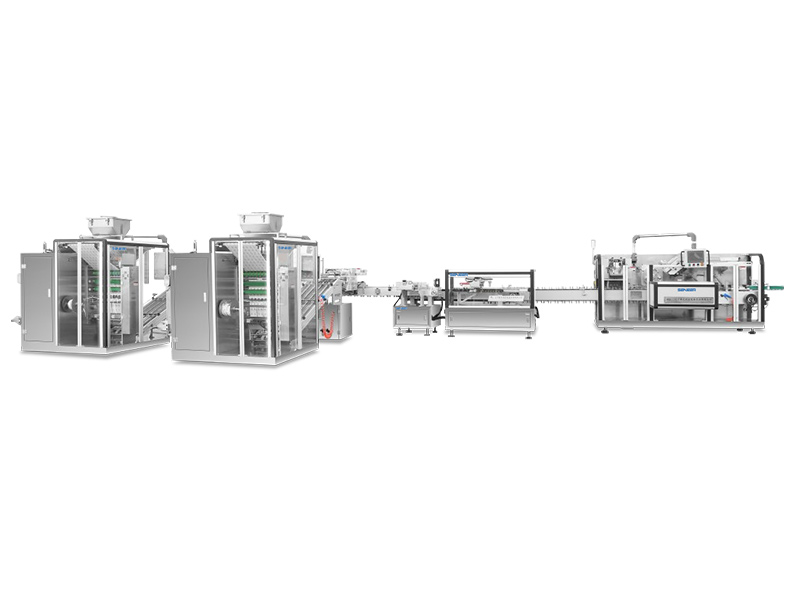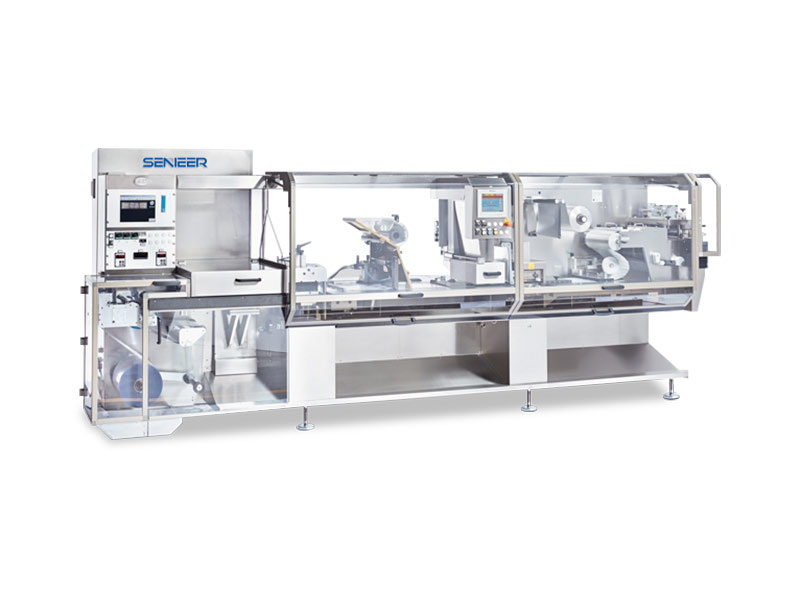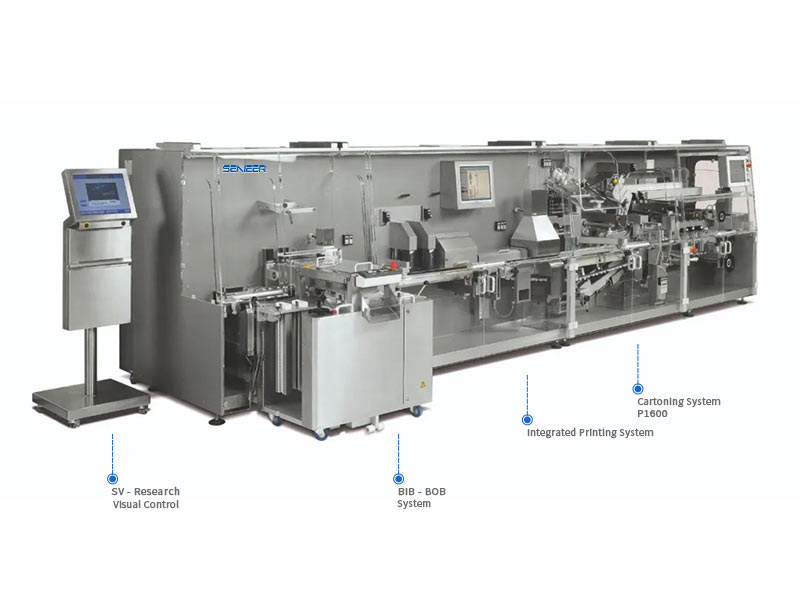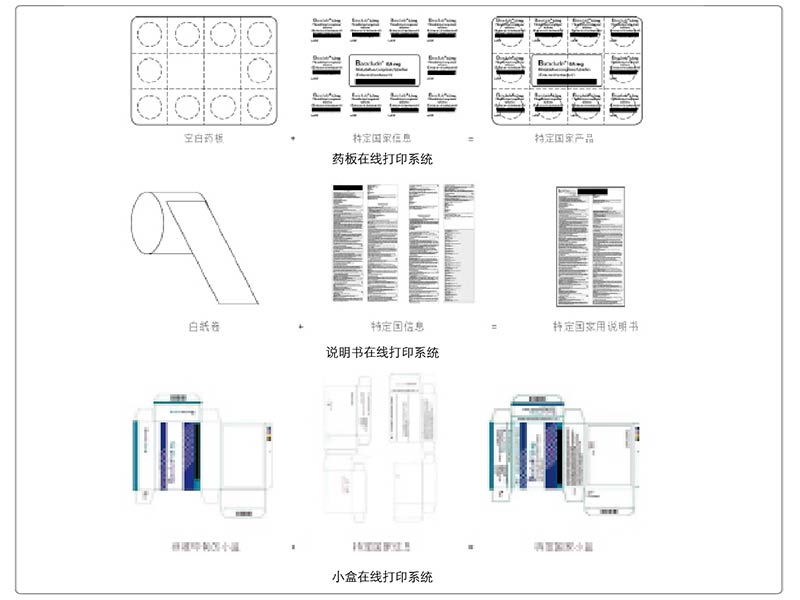In different countries and regions, there are specific regulations and packaging requirements to standardize the printed words and content on drug packaging and instructions, traceable code system, and batch number expiration date. MIT Technology Review also stated in the “Top Ten Breakthrough Technologies in 2020” released in February 2020 that the indications of medicines in the future will be gradually refined, and there will be more and more rare disease drugs, personalized medicines or high-value small-batch products. It can be seen that small batch packaging production has become an important trend in pharmaceutical packaging.
The trend towards small batch packaging production brings new challenges to the pharmaceutical industry: frequent replacement of format mold components will significantly extend equipment downtime, reducing not only the utilization of the packaging line, but also the operating efficiency of the equipment (up to 30%), resulting in high unit cost of medicines. How to improve the production efficiency of pharmaceutical packaging lines under the multiple small-lot production plan has become a common demand in the pharmaceutical industry. Whether in Europe, Southeast Asia or China, pharmaceutical companies are looking for a set of effective processes and equipment. ——Ensures that the packaging efficiency is always running at a high level even in the smallest batches.
Blister carton packaging is a technology suitable for small batch production. Whether it is a solid preparation or a liquid preparation, it can improve production efficiency from three vertical levels.
First, at the packaging line level, rapid mold replacement can be achieved. Tool-less plate change, mold error proofing design, electronic comparison-type quick adjustment, mechanical automatic adjustment, easy-to-clean design, and automatic and fast loading of mold product information are used to shorten the plate change time and improve the overall equipment efficiency (OEE).

The second is the introduction of Senieer’s Late Stage Customization concept at the factory level. Senieer’s blister sheets of the same product are only produced in the same workshop, and the cartoning and back-packaging parts are customized according to actual production needs, which may be in other workshops or another factory, or at the customer’s country or region for production.
The core concept is a mobile logistics module. This device stores blister packs from packaging machines into transportable BIB-BOB magazines. When the magazine is full, it can be stored in storage for later use, transferred to other packaging workshops or packaging plants, or manually packed in boxes. This innovative design solves the downtime dilemma faced by enterprises, reducing downtime by up to 90%.
Frequent plate changes are another challenge in low-volume production, often resulting in a severe imbalance between downtime and uptime. If the conversion time is added up, it may even exceed the operating time of the device. The introduction of the Senieer and modules enables the separation of the production process. In this way, the blister line can keep running continuously while avoiding frequent plate changes. And it can do online printing (DoD-Printing) before boxing, that is, drying by ultraviolet light (UV LED), which realizes low heat emission and adjusts the printing content as needed. The application of online printing can start immediately after the production line is cleared, the printing of production batches can be integrated in the primary packaging, and the production sequence can be reorganized. The purpose of this is to reduce setup operations, save time and cost, and improve overall equipment efficiency. Based on the modular structure of the packaging machine, combined with customized requirements, blister packaging, printing, boxing and other processes can be interconnected.

Although this production mode is highly compatible with equipment, the principle is simple: separate primary and secondary packaging, store finished blister packs in transportable silos, and carry out packaging, printing and other customization steps in the final production stage. This solution is suitable for any production process of small batches, and its advantages are:
- Shorten the time to market of drugs – pharmaceutical companies can start production after obtaining the license of the country and region where they are located, which can shorten the time to market of drugs by 4 to 6 weeks, and there is no need to reserve the delivery time for the production of bottom films and folding cartons;
- Smaller amortization and storage costs—reasonably control inventory, reduce operating costs, and eliminate the need to prepare materials containing pre-printed top films from different countries and regions;
- Improve the overall efficiency and usability of the equipment – reduce the cost of changing the version, the overall equipment efficiency is higher, up to 25%, and the version can be customized according to the requirements of different countries and regions.
For the consideration of drug quality and safety, Senieer upgraded the corresponding photo identification function for the LSC® solution. In addition to product identification, full-screen print image control is also possible. Online printing and cartoning ensures flexibility in production, changing specifications in less than 30 minutes and reducing the number of molds that need to be replaced. In addition, the incorporates an electronic format data management system with remote setpoint input and digital spindle position display, which means that changes to every specification piece can be replicated. The solution can be easily integrated into the existing production environment of any blister production line supplier on the market, and can integrate the production line management system into the customer’s existing IT environment, such as production data reception, material consumption feedback, production result data, etc. Senieer’s solution, shown in Figure 2.

Figure 2 Post-custom packaging can significantly improve the overall efficiency of the equipment
Third, at the company level, the white line solution can improve production efficiency. For the sales of products with small output, high added value and small batches and multiple purposes, the white line solution provides a very inspiring solution.
If the country-related information is blank on the intermediate product, for example, blank cover film, white blank instruction booklet and some color printing of the small box (including logo and other information), and then print different country information online, so that it can be done within 10 minutes. Product version changes between different countries can be completed within the same time, without maintaining inventory, as shown in Figure 3. Batch sizes can either be produced for a specific time only or customized on demand.
Figure 3 Schematic diagram of online printing of different information
The white line solution includes the BIB-BOB® module and LSC® solution at the factory level, adding online printing of the contents of the tablet, instruction manual and small box, significantly improving the flexibility of the packaging line. It can be seen that starting from three vertical levels, blister packaging can provide a new way to improve efficiency for small batch production processes in different countries and regions, especially for the production of pharmaceutical companies with export needs.











